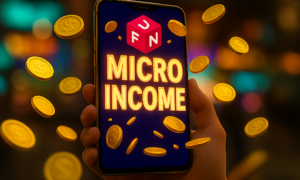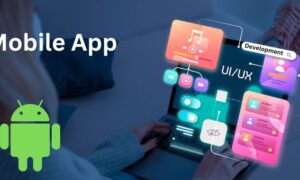Mobile app development is an essential part of today’s ever-expanding digital world. From games to social media, health tracking to online shopping, everything becomes possible through mobile apps. This means that creating the “right” app is more important than ever. But how do you design an app that stands out in this crowded market? What are the key requirements? And how do you make sure your app is user-friendly and meets the needs of your audience?
In this article, we will explore different types of apps, the development process, and other important aspects to consider.
Understanding Mobile App Development
Mobile app development involves creating software applications that function on mobile devices. These applications can be pre-installed on phones during the development stage, downloaded from app stores, or accessed through web browsers. Mobile app development needs a clear understanding of the market, the target audience, and the technical aspects.
Types of Mobile Apps
-
Native Apps:
Native apps are developed for one platform, be it Android or iOS. Developed to meet the standards of a particular operating system, they experience high performance and a superior user interface. For instance, developers use Swift to create applications for the iOS operating system, whilst they use Java for Android. Native apps can access all available features of the device, and this makes the application run efficiently.
- Advantages:
- High performance and speed.
- Better user experience.
- Access to all device features.
- Disadvantages:
- Higher development costs.
- Separate development for each platform.
- Example: Instagram, Facebook
-
Web Apps:
Web apps are accessed through web browsers. Besides, they are not installed on the device but function similarly to native apps. Web apps are built using web technologies like HTML, CSS, and JavaScript. They are designed to be responsive, adapting to different screen sizes and orientations.
- Advantages:
-
-
- No installation is required.
- Lower development costs.
- Cross-platform compatibility.
-
- Disadvantages:
-
- Dependent on internet connection.
- Limited access to device features.
- Example: Trello, Figma
-
Hybrid Apps:
Web applications and native applications are developed with a common feature in mind, while hybrid applications contain features of both web and native. They are constructed using web technologies but are packaged in a native app-like container so that they can be deployed in app stores. Moreover, hybrid apps can utilize elementary device characteristics; however, they supply a compromise between speed and cost of application creation.
- Advantages:
- Single codebase for multiple platforms.
- Lower development costs compared to native apps.
- Faster development time.
- Disadvantages:
- Performance may not be as high as native apps.
- Limited access to device features compared to native apps.
- Example: Evernote, Slack
-
Progressive Web Apps (PWAs):
Progressive Web Apps (PWAs) are extensions of websites that you can save on your computer systems or devices and use like an app. PWAs use web browser APIs and functionalities to bring a native app-like experience across devices. Plus, it is a type of webpage that can be added to your devices or computer systems to mimic a web application. Moreover, PWAs run fast regardless of the operating systems and device types.
- Advantages:
- They use very little data. An app that takes close to 10 MBs as a native app can be reduced to about 500KB when made a PWA.
- PWAs get updates like web pages. They automatically get updates every time you use them.
- There is no need for installation as PWAs are simple web pages. Users choose to ‘install’ when they like it.
- Also, you can easily share PWAs by simply sending their URLs.
- Disadvantages:
- There are limitations to using all the hardware and operating system features.
- PWAs can pose a few hardware integration problems.
- Full support is not available for some manufacturers’ default browsers.
- It cannot use the latest hardware advancements (like fingerprint scanner).
- Features limited to Android, such as adding to the home screen, notifications, etc.
- Example: Spotify, Pinterest Lite
Expert Solutions for Your Mobile App Development Needs
When it comes to mobile app development, finding the right solution for your needs is crucial.
- Understand What You Need
Set your goals and values. Are you looking to reach new customers, improve a service, or create a new tool for your business? Moreover, knowing your goals helps experts design the right app for you. - Pick the Best Type of App
Decide which type of app fits your goals and budget. For high performance, go for a native app. For saving money and reaching more people, a web or hybrid app might be better. Experts can help you make this choice. - Focus on User Experience
A good user experience keeps people coming back to your app. Experts will help design an app that is easy to use and visually appealing. - Make Sure Your App Stays Up-to-Date
After launching your app, keep it updated. Experts will help with maintenance, fixing bugs, and adding new features. This keeps your app running smoothly and meeting user needs. - Embrace New Technologies
Technology changes fast. Experts can use new trends like AI for smarter features, AR for interactive experiences, and IoT for device connections. Staying up-to-date keeps your app effective.
The Mobile App Development Process
To develop an app, follow these steps:
- Research and Planning: Understand your audience, study competitors, and define your app’s features.
- Design: Focus on creating a user-friendly and attractive interface.
- Development: Code the app using the appropriate technologies for your chosen type of app.
- Testing: Check for bugs, functionality, and compatibility.
- Deployment: Launch your app on app stores or web browsers.
- Maintenance: Keep your app updated and address user feedback.
The Future of Mobile App Development
Artificial Intelligence (AI)
People use apps with the help of AI to predict consumers’ actions, suggest what they can buy, or ask to provide some information on the Internet. For example, AI can use applications of virtual personal assistants, smart personalities such as chatbots, or smart portions like photo booths.
Augmented Reality (AR)
Augmented reality (AR) takes the real environment and adds to it computer-generated images. For instance, the use of AR in applications involving apps for a trial of clothes or makeup and even augmented reality games involving the physical environment. As advancements in the usage of AR occur, the functionality of the apps will become more creative and more engaging.
Virtual Reality (VR)
VR Experience is totally Immersive in nature, no doubt about that. Businesses using VR applications can immerse themselves in a location virtually as if they are physically there. This type of technology is widely used in games and training applications, but people will discover more ways of applying this technology to new areas such as virtual tourism or a virtual conference.
Conclusion
Mobile app development offers many opportunities. By knowing the types of apps and focusing on user experience, you can create something great. Keep up with new trends and use expert help to succeed in the competitive app market.



































